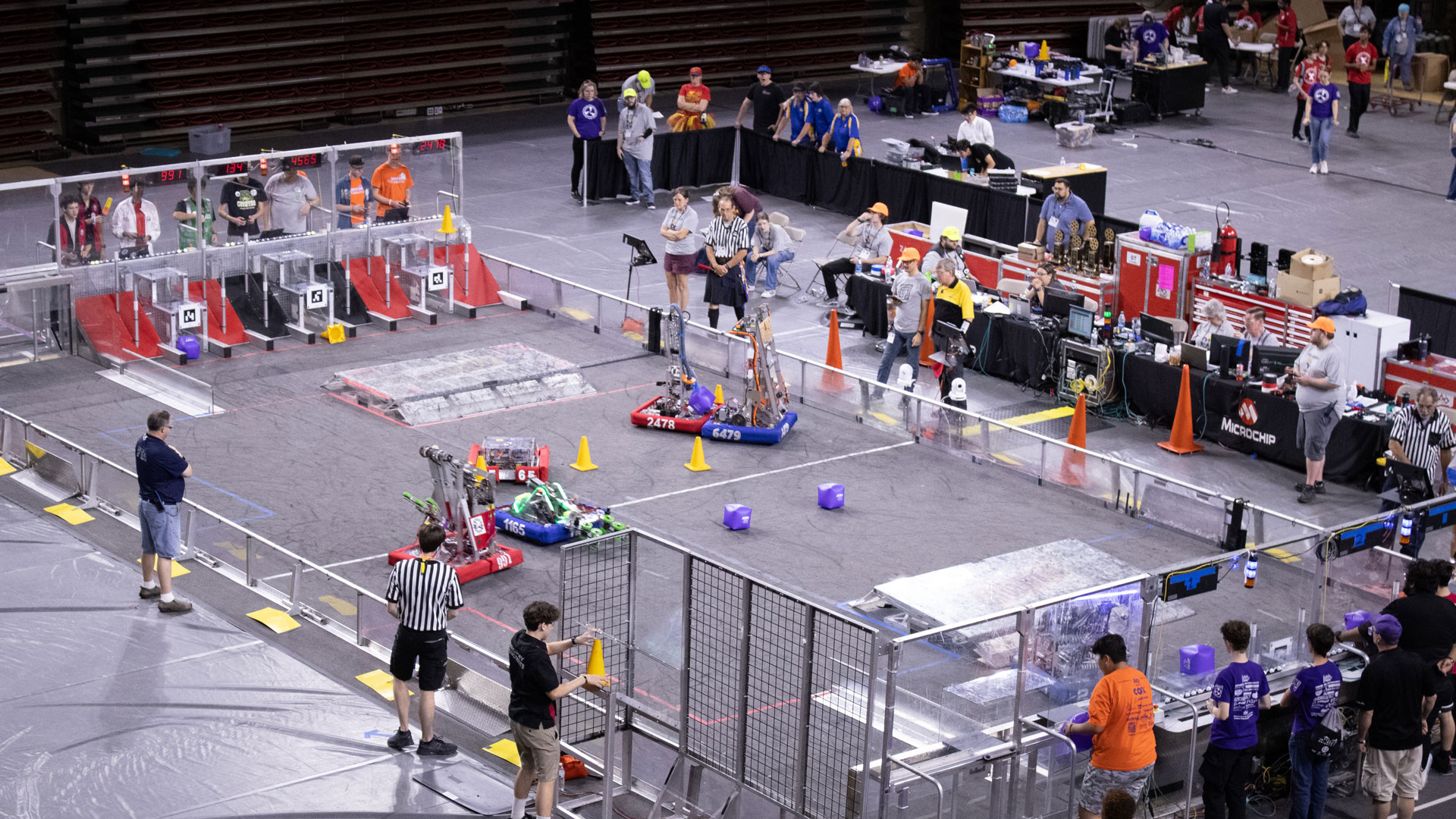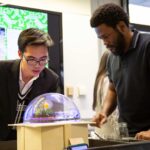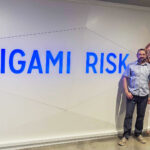
Charging up a passion for STEM careers
Arizona high school students find their paths through FIRST® Robotics Competition

On a warm Saturday this fall, Desert Financial Arena on Arizona State University’s Tempe campus was packed with competitors and a slew of cheering fans. However, the event wasn’t a basketball or volleyball game.
The spotlight was on teams of high school students from across Arizona who gathered to showcase the capabilities of robots they designed and built for the 2023 FIRST® Robotics Competition.
Hosted by ASU and the Ira A. Fulton Schools of Engineering, the Arizona FIRST Robotics Competition State Championship combines the excitement of sports with the academic rigor of applying science and technological skills, with teams facing off to see how their robots’ performance stacks up against that of their peers.
“We at the Fulton Schools believe hands-on experience in designing, building and programming a robot as a member of a team develops the skills needed to solve complex engineering problems,” says Elaine Michaud, the Fulton Schools senior coordinator for outreach and recruitment. “ASU celebrates the accomplishments of every student who participates in this event.”
Teams are challenged to raise funds, develop a brand and hone their collaboration skills as they design a robot capable of performing specific tasks that change every year. Each team builds and programs its robot to compete in a complex field game against similarly determined competitors.
In the 2023 State Championship, each team formed an alliance with two others. The trio of robots were then matched up against robots of three other teams in a challenge called CHARGED UP.
The competing alliances were tasked with moving game pieces consisting of cubes and cones to specific locations on the field to score points.
The robots started each match autonomously, following a set of pre-programmed instructions developed by the students. After 15 seconds, team members took control.
For high school students, the challenge is as close to real-world engineering as it gets. The energy in the arena is as charged as for a football or soccer game, and the preparation for every FIRST Robotics Competition is just as intense.
“When our students play football, we don’t force them on the path to become professionals, but we do want them to exercise and learn how to work hard toward a goal,” says Lewis Ruskin, coach and founder of the Sabercat Robotics team from Scottsdale’s Saguaro High School and an academic associate at ASU’s Luminosity Lab. “The FIRST Robotics Competition has the same function, but with the goal to get kids interested in STEM topics. They don’t realize they’re learning engineering, software, electrical or mechanical technologies. They just think, ‘I’m building a robot to compete against other robots.’”
Discovering interests and skills
FIRST Robotics Competition is run by youth-serving nonprofit For Inspiration and Recognition of Science and Technology, or FIRST®, and offers a series of programs to encourage interest in STEM fields among students as young as four years old. The FIRST® LEGO® League gives younger children the opportunity to get involved in STEM activities, then move on to advanced opportunities like the FIRST® Tech Challenge and FIRST Robotics Competition as they get older.
Dustin H., a ninth-grade student on the Plasma Robotics team from Mesa, has been involved with FIRST since he was in the third grade. Although college is a few years away for him, Dustin says he wants to pursue a degree in engineering to have a career in the field.
“I like that there’s always multiple things to do on a team instead of just building the robot,” Dustin says. “There’s programming and a ton of other things that you can do; it’s not just limited to one aspect. I like the building and designing side, but I’ve also enjoyed some of the programming.”
Maisey D., a ninth-grade student at Paradise Honors High School in Surprise on the LAUNCH TEAM Robotics community team from the Phoenix metro area’s West Valley, says that her interest in robotics has grown since she joined the series.
“Before I joined the team, I knew I was interested in engineering,” Maisey says. “The more I work with this, the more I can see the horizons of what’s out there. Seeing different colleges and different jobs you can get opens up many possibilities. I think I’ll major in something in STEM, and I think a lot of that is due to LAUNCH TEAM Robotics.”
Jackson Martinez, a first-year Fulton Schools mechanical engineering student, was on hand as a volunteer at the State Championship.
He participated in FIRST Robotics Competition events throughout high school and continues to be involved as a college student. He says his experiences prepared him to pursue his degree.
“The competition series has helped a lot with the ability to collaborate, think about the big picture and how not only are you looking at a solution, but how other groups of people are going to look at the solution,” Martinez says. “It’s just a fun time.”
He says his experience in the FIRST Robotics Competition even helped him find the right major.
“I learned that I was not the greatest at programming, but I was always the best at building things,” he says.

Students control their robots during a challenge in the 2023 Arizona FIRST Robotics Competition State Championship. The event engaged high school teams in a blend of sport and STEM, or science, technology, engineering and math, skills. Students used their robot designs in a cooperative competition, or coopertition, where teams worked together to score points in multiple rounds throughout the event. Photo courtesy of Elaine Michaud/ASU
A teacher’s perspective
Mel Wendell, a science and engineering teacher at Tempe’s Corona del Sol High School, explains that while many of the students on her team are those she teaches, high schoolers with varied interests can join the extracurricular effort to take robots from ideas to being competition-ready.
“The kids come in after school, and that’s when they do all of their work: the building, programming and design,” Wendell says. “We also have a student-led business side of the team that does marketing and outreach for grants. We as mentors are there to guide or provide them with the technical expertise they may not have yet, but the robot is their design; it’s what they want to do and how they want to compete. They lead it all, and we’re just behind the scenes.”
Being a teacher and mentor gives Wendell the opportunity to see her students put engineering and technology concepts into practice.
“The most important aspect for me as a teacher is the fact it brings everything = these kids learn in the classroom to life,” she says. “They’re applying their math or science skills to a real-world project.”
On top of technological skills and lessons, participants learn networking skills that come through FIRST’s core value of coopertition, a portmanteau of cooperation and competition.
“The students are working with other teams who may say, ‘We don’t have something we need. What now?’” Wendell explains. “My response is to talk to other teams; they’ll get it to you. There’s a level of gracious professionalism. It’s this notion about helping each kid and team to get their robot up and running, regardless of resources, knowledge or their design.”
Though students enter the State Championship with hopes of earning awards for their team’s efforts, FIRST Robotics competitors all commit to treating each other with respect and kindness. While winning teams leave the event with bragging rights and a boost of confidence heading into the next season, the students are often prouder that they’ve raised the level of competition by cheering on other teams and helping them find solutions for problems that may have arisen throughout the day.
“It’s an interesting phenomenon that these kids experience because in the sports world, there’s always a rivalry of, ‘we don’t like the other team’ and the like,” Wendell says. “You can’t do that here. You won’t thrive. The only way to be successful is by helping each other, leaning on each other and being able to do your best.”
Shining a light on Sabercats
Ruskin has introduced his team to the many projects going on at ASU during his time as the Sabercats’ coach.
“We’ve had several Saguaro students as interns over the summer in the Luminosity Lab,” Ruskin says. “It’s a great pipeline because we have kids who already know how we write code and how we build mechanical projects.”
He says many of the interns are hired as student workers before they begin their first-year classes at ASU.
“We have students who are fully trained in how we operate who have basically had a three-year job interview,” he says.
One of those high school interns is Adam S., a Saguaro High School senior who plans to pursue a computer science degree after graduating in spring 2024.
“Lewis Ruskin offered me the internship, as I was the programmer of our robotics team,” Adam says. “He saw my potential and decided I would be a good fit for the internship.”
Adam says he has always had an interest in programming and was looking for a way to further his abilities when he joined the FIRST Robotics Competition team.
“We didn’t have any programming clubs at Saguaro High School, so I thought the next best option would be the robotics team,” Adam says. “I also enjoy the creative process of coming up with new ideas.”
Junior Giavanna R. took a different path to joining the Sabercats. As an elementary school student, she got involved in the FIRST LEGO League and has advanced through FIRST programs since then. Giavanna says she still loves the competition and the community FIRST offers.
“It’s a great experience to meet everybody, share a passion with so many people and see your work come to life,” Giavanna says. “You take something that seems like scrap metal and you get to see it actually compete. It’s amazing to watch everything work and share what you love with everybody else there as well.”


































